
© Dave Morgan. (Click image for larger version)
Ivan Putrov
Men in Motion – 2014
London, Coliseum
30 January 2014
www.putrov.com
Gallery of pictures by Jim Markland
Gallery of pictures by Dave Morgan
What could be more daunting for a male dancer than performing semi-naked on a vast bare stage with nowhere to hide? Surely only a complete narcissist would welcome such exposure – I’m recalling Nikolai Tsiskaridze in various gala solos (including Goleizovsky’s Narcisse).
Fortunately, the men Ivan Putrov has chosen for his latest Men in Motion programme are exceptional dance-interpreters, not self-glorifiers. His aim, as before, is to show how choreographers during the past 100 years have met the challenge of revealing aspects of a male dancer’s ability and personality, rather than simply showcasing virtuoso feats. Though Putrov’s ambition is admirable, it’s a lot to ask of audiences who may not be familiar with ballet history or with the reputations of leading dancers from different parts of the world.
The earliest ‘gods of the dance’ evoked in the programme were Auguste Vestris (1760-1842) and Vaslav Nijinsky (1889-1950). Putrov included his own adaptations of three early 20th century ballets danced by Nijinsky: L’Après-midi d’un faune, Petrushka and Le Spectre de la rose. In Petrushka, Michel Fokine envisaged Nijinsky as a not-quite-human puppet; in Spectre, as an other-wordly spirit; and in his own choreography for the faun, Nijinsky personified a half-beast, half-human creature. They are tricky roles to present out of context, though Putrov is justified in believing they have endured because they still intrigue us today.
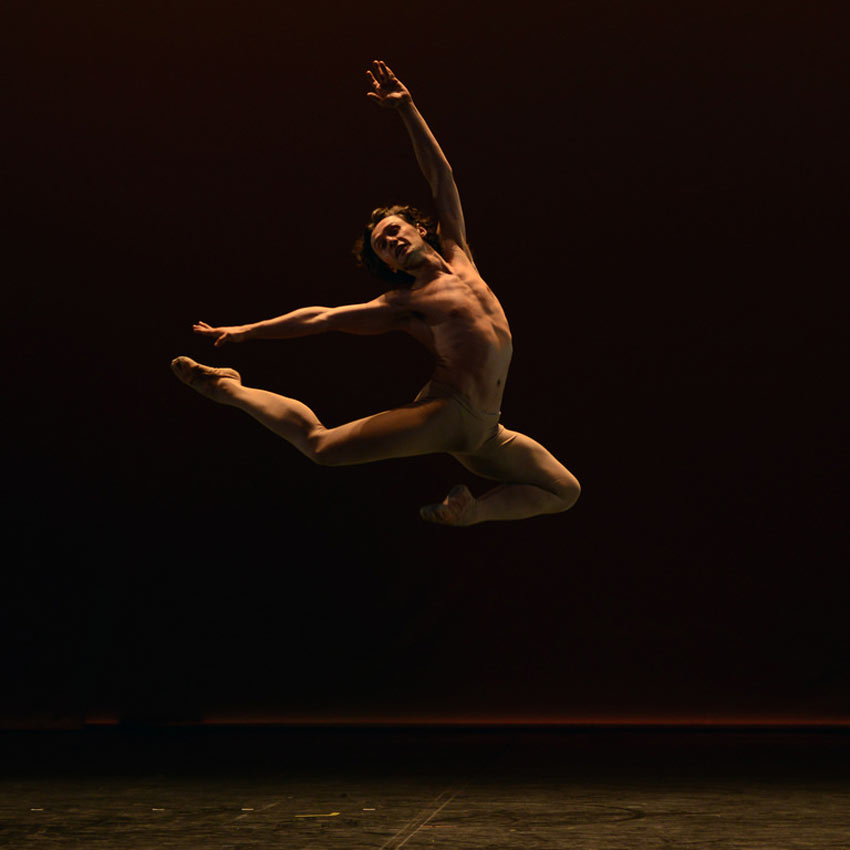
© Dave Morgan. (Click image for larger version)
The evening opened with a truncated version of L’Après-midi, with the faun performed by Rainer Krenstetter of Berlin Staatsballet and the chief (and sole) nymph by Elena Glurdjidze of English National Ballet. Unsatisfactory as an account of Nijinsky’s creation, it nonetheless served as a manifesto that ballet can be strange, erotic, even shocking. Next came Putrov as Narcisse, another mythical adolescent exploring his sensuality. The music, by Nikolai Tcherepnin, was originally for a Fokine ballet featuring Nijinsky as Narcissus; the 1960 solo was created by Kasian Goleizovsky for the Bolshoi’s Vladimir Vasiliev. Putrov performed it with an appealing vulnerability, less frantic than Sergei Polunin in the 2012 Men in Motion at Sadler’s Wells.
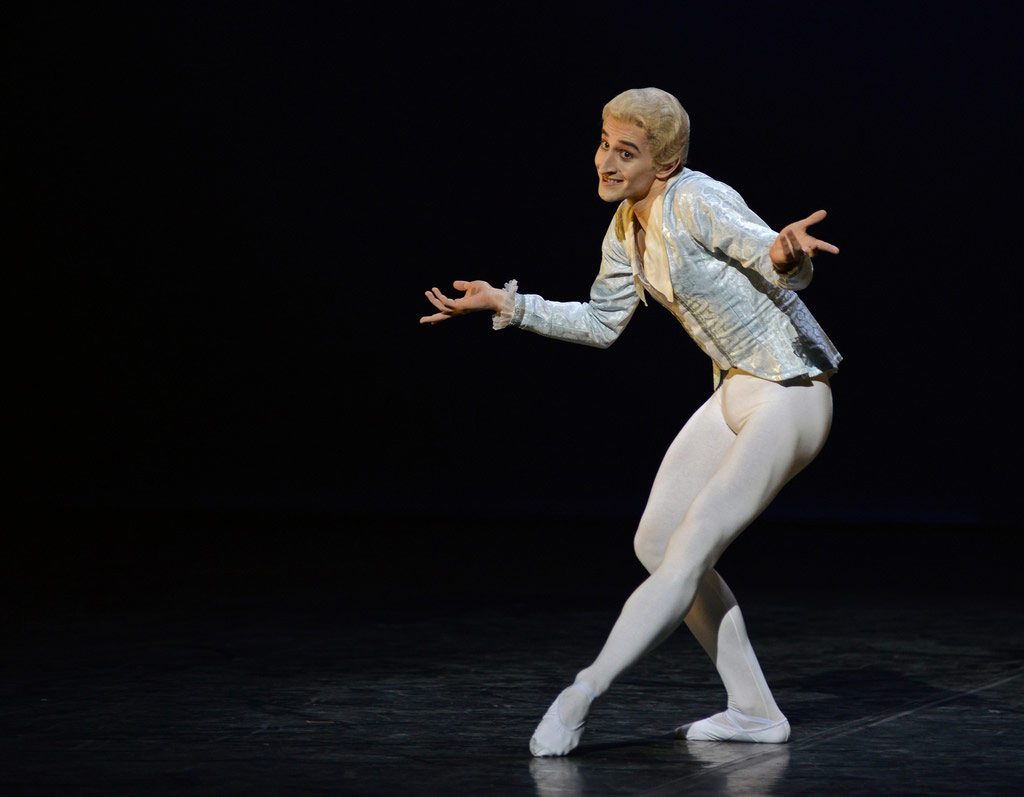
© Dave Morgan. (Click image for larger version)
Valentino Zucchetti from the Royal Ballet performed the Vestris solo choreographed in 1969 by Leonid Jacobsen for 20 year old Mikhail Baryshnikov. Based on etchings and figurines of Auguste Vestris, famous for his versatility as a mime as well as a dancer, the solo set out to capture the spirit of the legendary performer and of the talented young Baryshnikov. A series of 15-second vignettes vary swiftly from old man to young coquette, pious woman to laughing drunkard, with a sequence of virtuoso beats and jumps to show what Vestris could do. Zuchetti seized his chance to own the role, dancing impeccably and wittily, demonstrating what a vivid performer he is.
The first half of the programme included two neo-classical solos for beautiful men in exiguous outfits: Vadim Muntagirov (ENB) in white tights to a Bach adagio, Marian Walter (Staatsballett Berlin) in underwear to Mozart. Muntagirov was meditative, drawing out his long line while devouring space; Walter was powerful and affecting in Guala Pandi’s Lacrimosa. The music for most of the performances was played live, conducted by Richard Bernas, with members of the New London Chamber Choir for the Lacrimosa from Mozart’s Requiem Mass.

© Dave Morgan. (Click image for larger version)
One of the exceptions was Sinnerman, to a Nina Simone recording. Daniel Proietto dazzled in a glitterball costume, bouncing round the stage in brand new choreography by Alan Lucien Øyen, resident choreographer with the Norwegian National Ballet, where Proietto is now a member. Though the solo was fun, it, and the outfit, revealed little about the dancer himself – and it went on for too long.

© Dave Morgan. (Click image for larger version)
The revelations came in two premieres involving Edward Watson (Royal Ballet). Javier de Frutos created 3 with D, a duet for Watson and Marijn Rademaker (Stuttgart Ballet) with Dan Gillespie Sells as the third singing on stage, and Ciaran Jeremiah playing the piano in the pit. Watson and Rademaker, physically different but hyper-supple, battled through a conflicted courtship that couldn’t be resolved. The constantly changing spaces between them were as fascinating as their contortions and their contrasting arabesques. A brave and sensitive piece, it showed how emotionally graphic dance can be.
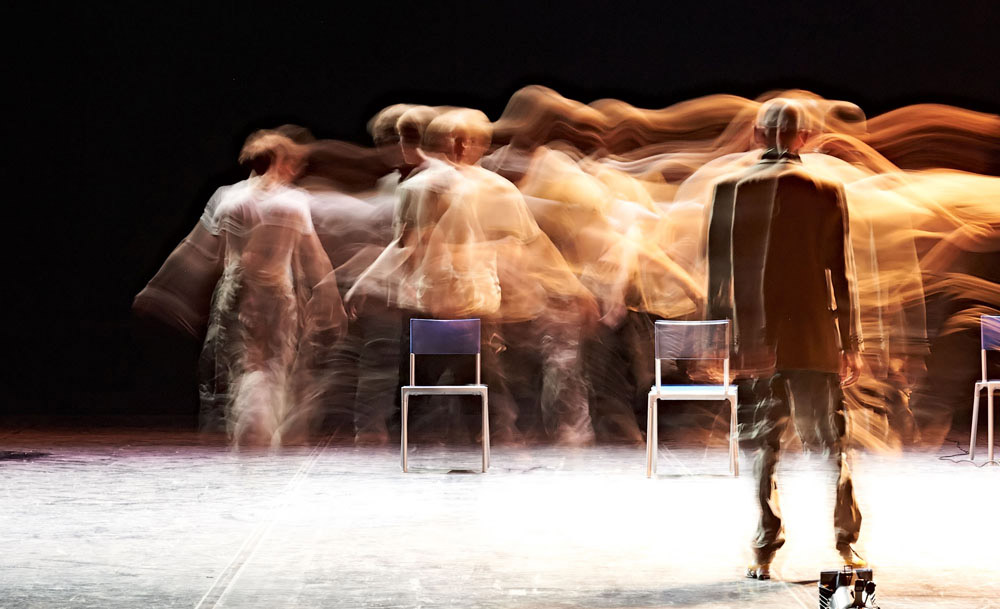
(Click image for larger version)
It was complemented in the second half by Roland Petit’s male pas de deux from his 1974 ballet, Proust ou les intermittences du coeur. Two men (Morel and St.Loup from Proust’s Remembrance of Things Past, if you must know) echoed and mirrored each other in the fantasy of an ideal relationship, to Fauré’s Elégie. Walter and Krenstetter did the luscious pas de deux justice without being able to tell us much about themselves.
Arthur Pita transformed Watson into a tragi-comic figure in Volver Volver, to a heartbreaking song by Spanish-African singer Buika. Starting out as a camp burlesque master of ceremonies, Watson was then shot twice, bleeding through his shirt front. He morphed into Spiderman – his super-hero alter ego. But he wasn’t invincible: his balloon heart floated away and his wounds proved fatal. Pita, like de Frutos, brought out facets of Watson’s personality that his Royal Ballet repertoire has largely kept hidden.
Putrov finds elements of himself in Petrushka, a role he has yet to dance in a production of Fokine’s 1911 ballet. In his solo version, he reinterprets the character as a conflicted dancer rather than a straw puppet with a wounded soul. I can’t help feeling that you need the context of the complete work to understand the conflicts Petrushka suffers when he’s isolated in his cell, tantalised by a brief visit from the ballerina doll (Glurdjidze).

© Dave Morgan. (Click image for larger version)
Glurdjidze, the sole woman in the programme, finally had her chance to dance as the blissful girl in Le Spectre de la rose. She was joined by Muntagirov as a romantic young woman’s dream partner – sympathetic yet strong, attentive but elusive. Muntagirov landed his leaps soundlessly and accomplished immaculate turns en attitude time after time. As Putrov knows from performing the role, it requires deep reserves of stamina. The Royal Ballet must be rejoicing at Muntagirov’s imminent arrival in its principal ranks.
The evening ended with two works that outlined male physiques in tantalising gleams of light. Marijn Rademaker danced the Äffi solo created for him by Marco Goecke in 2005 (and which he performed in Stuttgart Ballet’s Made in Germany programme at Sadler’s Wells in November last year.) Inspired by three Johnny Cash songs, Äffi conceals the dancer’s face in darkness as though he’s hiding his true self: the twitching of his fingers or the shakings of a foot expose his unease. His back is more often to the audience than his front; he holds still when the music compels him to move. It’s a creation that rewards seeing more than once.

© Jim Markland @James Rowbotham Dance Photography www.frozenmotion.co.uk.
(Click image for larger version)
Russell Maliphant’s Two x Two, originally a solo, was performed by Proietto and Putrov in squares of light on either side of the stage. Like several of the pieces in the programme, it worked as a kind of hallucination – or vision. Well-chosen as a closer (as was Lacrimosa before the interval), it sent us home gratified with Putrov’s intent to encompass a hundred years of choreography in a hundred minutes of male dancing.













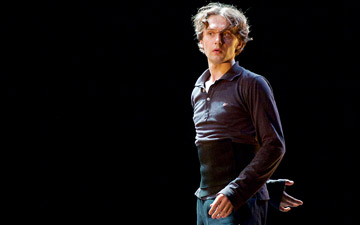
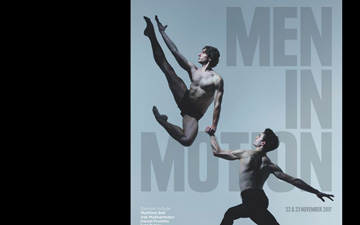
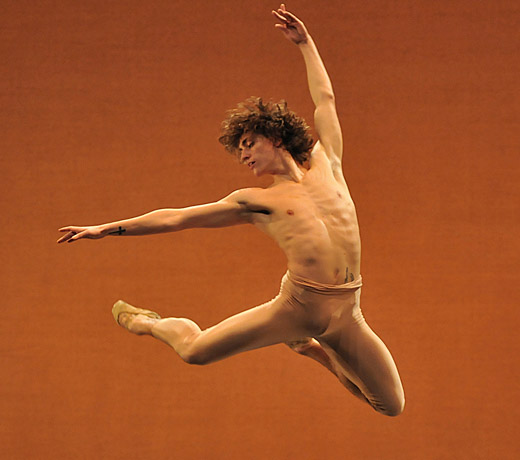

You must be logged in to post a comment.